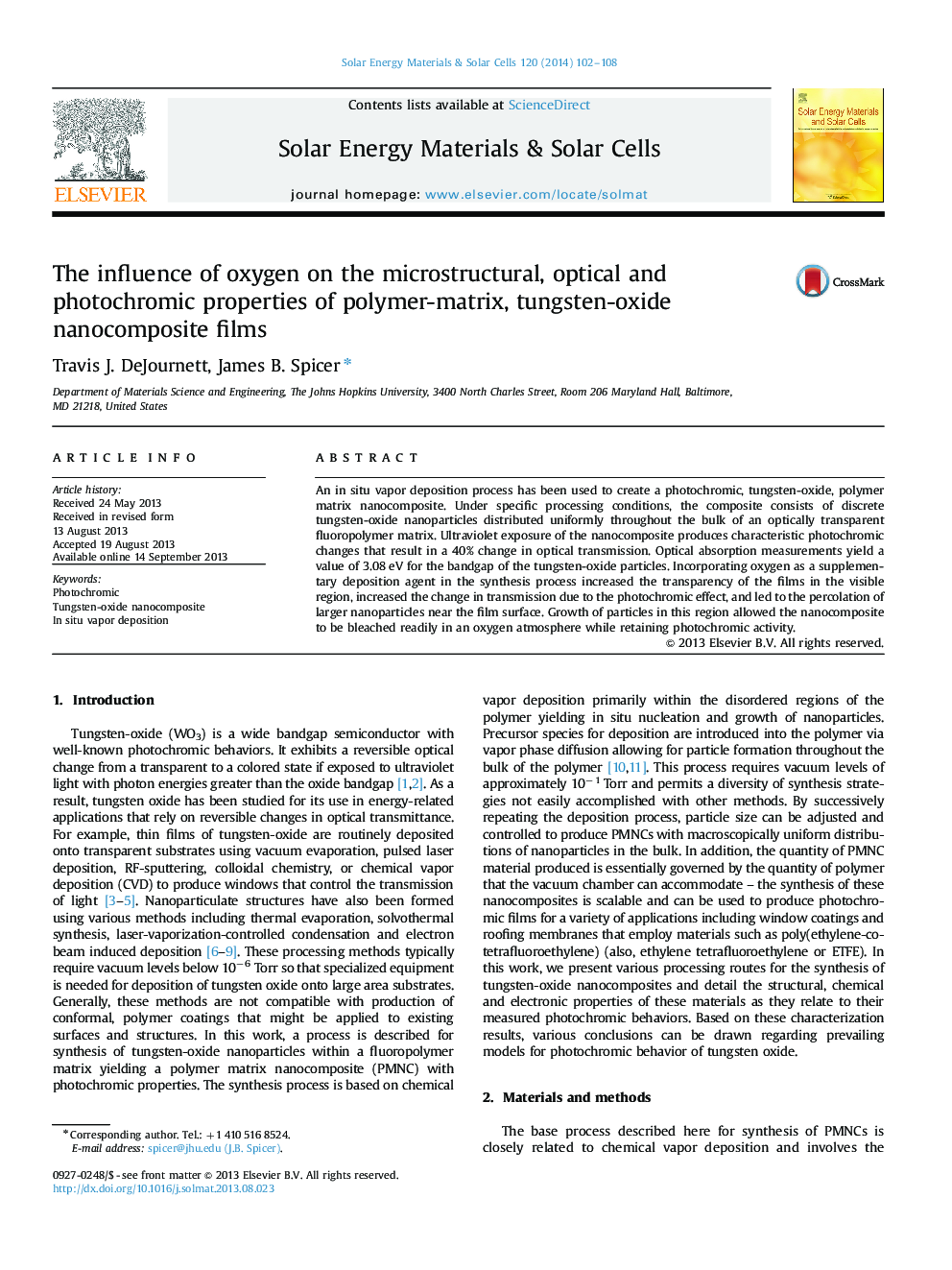| Article ID | Journal | Published Year | Pages | File Type |
|---|---|---|---|---|
| 10248684 | Solar Energy Materials and Solar Cells | 2014 | 7 Pages |
Abstract
An in situ vapor deposition process has been used to create a photochromic, tungsten-oxide, polymer matrix nanocomposite. Under specific processing conditions, the composite consists of discrete tungsten-oxide nanoparticles distributed uniformly throughout the bulk of an optically transparent fluoropolymer matrix. Ultraviolet exposure of the nanocomposite produces characteristic photochromic changes that result in a 40% change in optical transmission. Optical absorption measurements yield a value of 3.08Â eV for the bandgap of the tungsten-oxide particles. Incorporating oxygen as a supplementary deposition agent in the synthesis process increased the transparency of the films in the visible region, increased the change in transmission due to the photochromic effect, and led to the percolation of larger nanoparticles near the film surface. Growth of particles in this region allowed the nanocomposite to be bleached readily in an oxygen atmosphere while retaining photochromic activity.
Keywords
Related Topics
Physical Sciences and Engineering
Chemical Engineering
Catalysis
Authors
Travis J. DeJournett, James B. Spicer,
